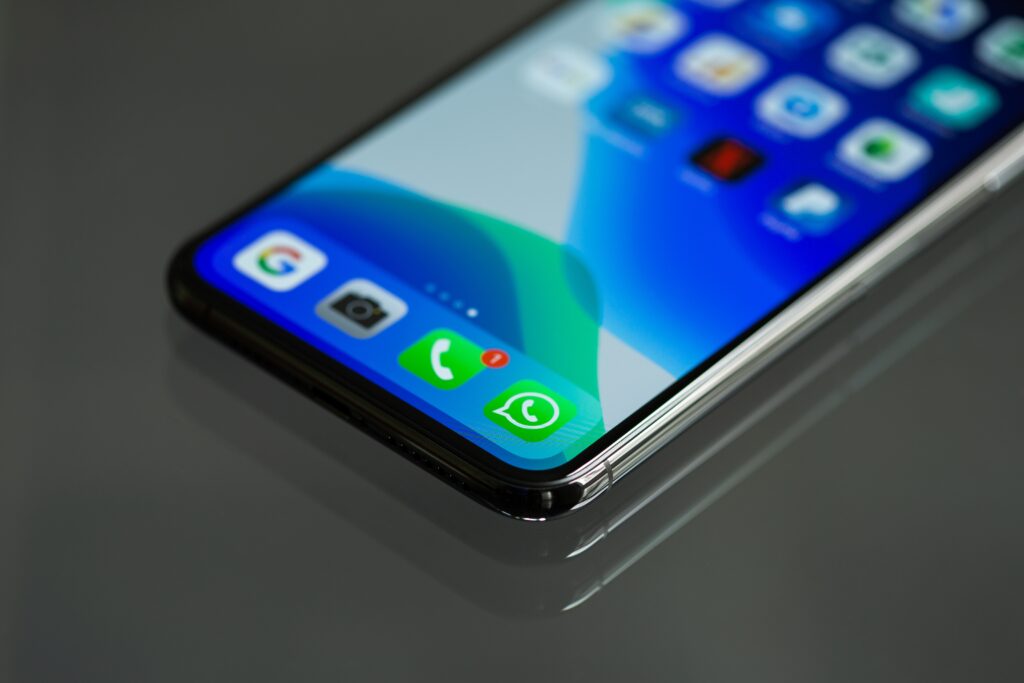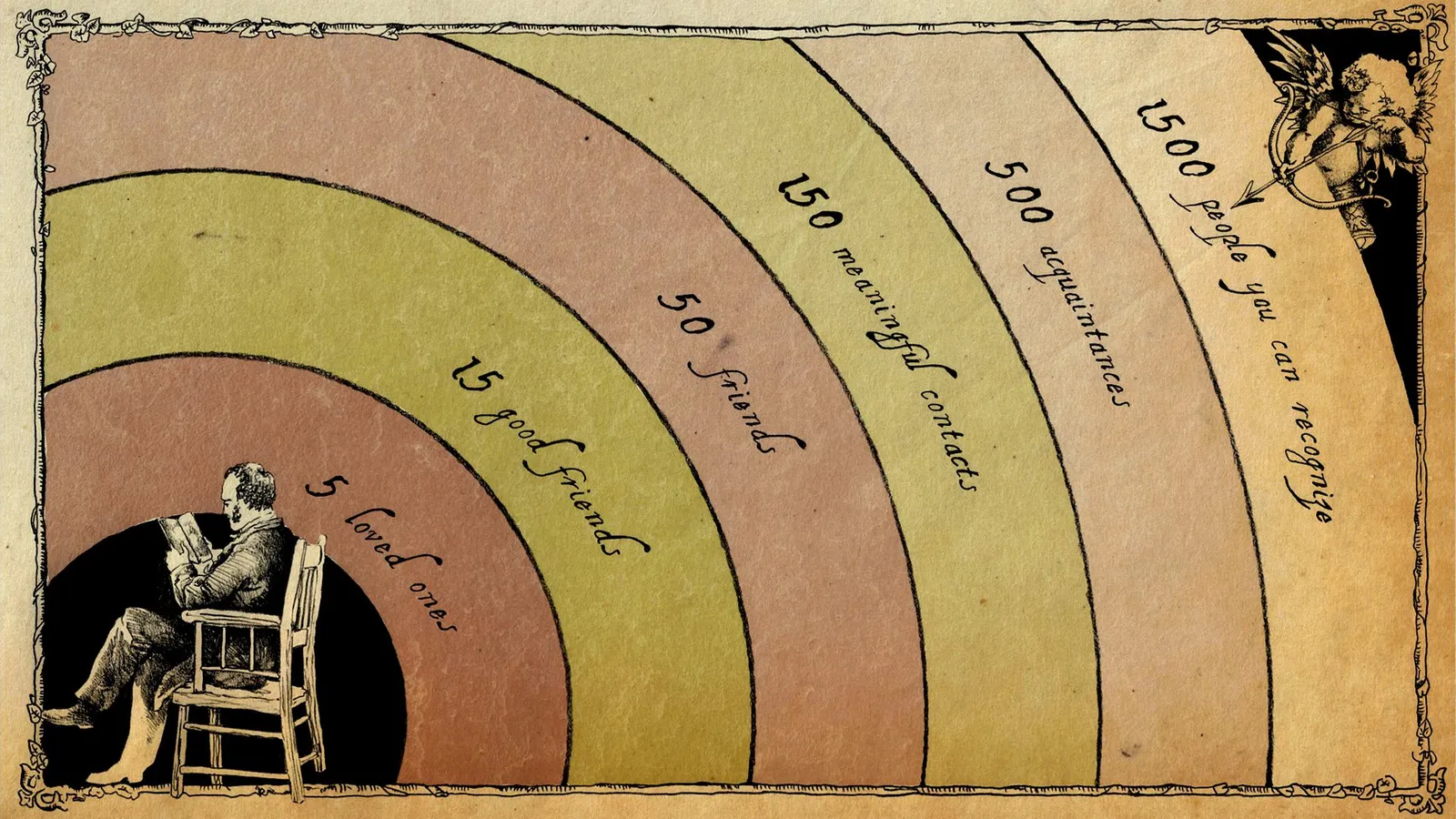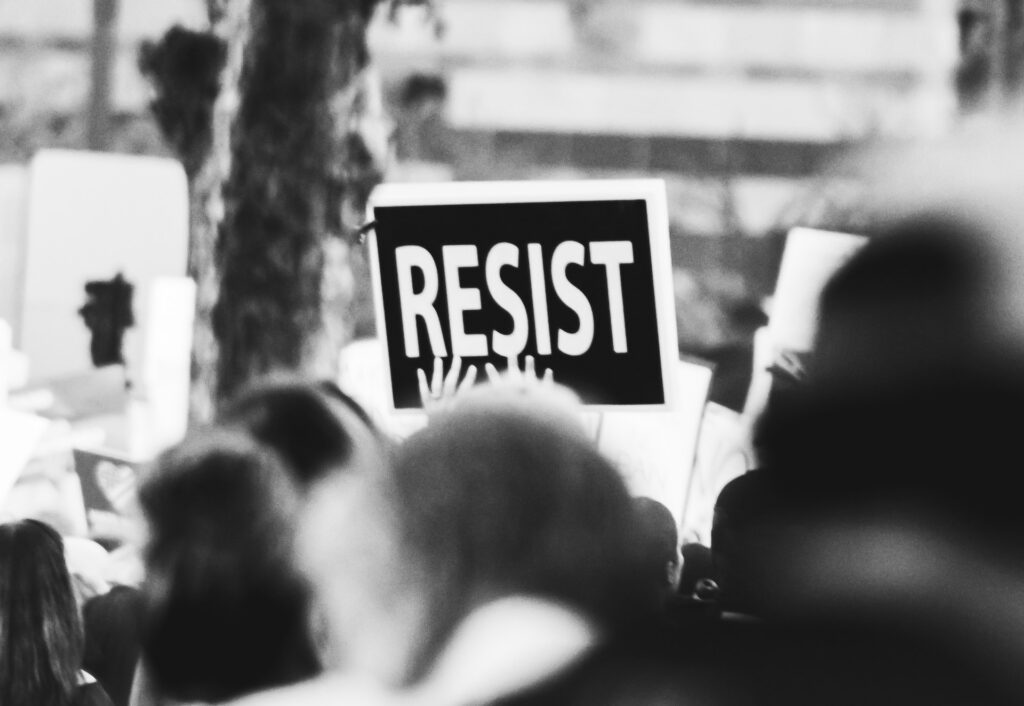In my last post, I explained why it is important that you get rid of WhatsApp as soon as possible. You might ask yourself how this would be possible since almost everybody around you uses WhatsApp as their main or only instant messenger. WhatsApp is the most commonly used instant messenger in Europe and North America. This situation can be described with the phenomenon of the network effect. In literature, the network effect of instant messengers is commonly described as a direct n-to-n network, meaning that every user gets a certain value for every other user being part of the network. In this blog post, I am deconstructing this theory using Dunbar’s number. I will describe the psychology behind the network effect and why groups have the highest impact on it. I will then provide a method for how every user can iteratively migrate away from WhatsApp with the lowest effort possible.

Dunbar’s number an the network effect
Dunbar’s number is an anthropologist concept that found a correlation between primate brain size and average social group size, stating that the number of people a person can keep comfortably keep a relationship with averages around 150 people. Depending on the individual this limit varies between 100 and 230. Extroverts tend to have looser connections with a larger amount of people, while introverts tend to establish closer bonds with a smaller group. The number is also influenced by cultural factors.

Dunbar breaks down the number of people a person can recognize into six circles. The outer circle contains all people you can recognize. In this group fall people, you have met or seen but not made acquaintance with. This might be a shopkeeper or a public figure, like a movie star. In the second-largest circle are acquaintances totaling around 500 people. These might be people you have gone to high school or university with and if you would randomly encounter them at a public place you would great them. Then there is the circle of meaningful contacts with about 150 people. As stated before, this is the group of people you actually are in contact with at the moment. The next smaller group is the circle of friends consisting of 50 people. These are people you regularly meet and if you would give a large party, you would invite them. Then there is the circle of good friends consisting of 15 people, those are people you meet or talk to at least once a week on average. Finally, there is the circle of loved ones. This is your closest family, your parents or siblings, your partner or very good friends.
If we apply this theory to a communication network, in this case, WhatsApp, we can conclude that the value of a possible connection with a given user is highly dependent on which circle the other user is a part of. Since WhatsApp does not provide any public channels, it makes the membership to the network of somebody you have never met and you will never meet of neglectable value. This is in contrast to platforms like Telegram, Matrix, IRC, or Discord, which host public communities with tens of thousands of members. Besides not providing any public channels, WhatsApp groups are also limited to 256 users.
There are two ways to establish a direct chat on WhatsApp: First, a person would have to find a potential communication partner outside of the platform to exchange phone numbers with and create a contact, which fulfills a possible measure of acquaintanceship. Secondly, if both persons are members of the same group, they can engage in a direct chat, therefore already being acquainted.
Assuming that the network theoretically provides n-to-n connections, the value of the connections outside of the acquaintance circle is neglectable small because the perceived value for the possibility of a connection between a given user and any other user is decreasing towards the outer circles. In my opinion, only a public social network like Facebook or Reddit can truly be considered to be a direct n-to-n network, where a given post can theoretically be reached by all users, therefore providing valuable communication that extends beyond the circle of acquaintances. This leads to the conclusion that WhatsApp is intended for communication between acquaintances.

Therefore, the network effect of WhatsApp is commonly misunderstood, it is not an n-to-n network, but instead, an n-to-m network, where m is the amount of past, current, and future acquaintances of a given user. Further, m can be understood as an upper limit, since a person does not necessarily know the phone number of all of his acquaintances or shares a group with them. The average amount must therefore lie in between the circle of meaningful contacts and acquaintances.
In a nutshell, the value of an instant messenger network for a given user is not accumulated by the total number of users on the network but instead by the number of the user’s acquaintances participating in the network. To give a real-world example, it is irrelevant that WhatsApp has the largest global market share when you are a user in Asia, where the most common instant messengers are WeChat and Line.
Groups are the most important factor for network value of WhatsApp
Groups are a feature that made instant messengers popular but are often disregarded when their network effect is analyzed. An individual can have access to multiple communication networks: SMS, E-Mail, WhatsApp, Matrix, IRC, Telegram, Signal, Skype, Line, WeChat, Discord, etc. So two random individuals meeting can easily agree on a common communication channel and the chance is very high that they find several matching pairs. On the other hand, a group can only reside in one particular network, this is unless the network allows bridging groups between networks, which of course WhatsApp does not.

10,730 collected groups (Source: Rosenfeld et. al. 2018)
In 2018, Avi Rosenfeld conducted a study about usage patterns of WhatsApp. He found that majority of chats were direct chats (groups with 2 people) with 71.5%. On the flip side, 57.6% of all messages were exchanged in groups, consisting of three or more people, while groups with 11-20 members had the highest engagement. These results perfectly comply with Dunbar’s theory, where communication is most frequently expected within the circle of good friends consisting of 15 people. This means that groups, especially relatively small ones, are of high importance for instant messenger users, therefore being the most important factor of the perceived network value.

Psychology behind the network effect
Groups are a massive driver for the psychological phenomena of the bandwagon effect, which is the tendency to adopt a certain behavior only because others do the same, regardless of any negative side-effects this might have. There are several reasons behind this phenomenon but specific to groups are the normative social influence and the fear of missing out.

Normative social influence is the influence of other people that leads us to conform in order to be liked and accepted by them. Imagine a situation where a group of people debates about which instant messenger network they should use for their group communication. When the majority votes for WhatsApp, either out of pure ignorance and comfort or simply out of unawareness, the minority tends to comply with the choice because the need for a positive relationship leads them to conformity. Instead of debating and trying to convince others, they take the easy route of conforming.
This conformity is further reinforced by the fear of missing out. The minority could simply split and create their own group but they would constantly have the desire to stay connected with the others doing. Incidentally, Facebook’s algorithm is deliberately exploiting these psychological effects, driving users into an addiction, where they constantly need to check their feed. When this need is not fulfilled it worsens depression and anxiety. Groups can therefore also be seen as a smaller-scale variant of a Facebook or Instagram feed.

The normative social influence and fear of missing out establish a self-reinforcing mechanism, a positive feedback loop, that keeps people captive in the WhatsApp network.
How to break out of the WhatsApp network
If you want to break out of the WhatsApp network you have to overcome this fear and use the psychological phenomena of the minority influence, which leads back to Moscovici’s conversion theory and earlier studies by Solomon E. Asch. Instead of considering the inner turmoil a member of the minority has, Moscovici studied the influence on the majority when they are confronted with a minority opinion. A minority view is more distinctive, capturing attention and resulting in a validation process, where people carefully analyze the discrepancy between their own view and the minority view. Simply put, confronting people with a different point of view will plant a seed in their brain which will have a chance to change their opinion to a certain degree. He has found that this conversion is much more likely to happen in a private sphere rather than in public.

In order to achieve the conversion of the majority, we have to use informational social influence. By presenting information that the majority does not know or expect, this new and unexpected information catches the attention of the majority to carefully consider and examine the minority’s view.
Applying this knowledge to the migration away from WhatsApp we have to think small instead of big. There is simply no way to break the network effect on a larger scale, e.g. by an advertisement campaign of some sort. Instead, we apply the concept of Dunbar’s circles to iteratively diminish the network effect of WhatsApp, by confronting the inner circles with the information first.
I specifically recommend moving to Matrix. If you haven’t heard about it yet, I will give brief subsumption about it in the next section.
Start with your family, flatmates, and closest friends. Convince them why they should stop using WhatsApp, and present them the alternative of Matrix, further describing why it is superior. Then start migrating the groups these people form to Matrix. Continue and repeat this process with the groups consisting of the friends and good friends circle. Since people belonging to your inner circles might also be part of larger groups, the minority in the larger groups will be increased, making conversion easier. You should prioritize groups with the smallest amount of members and with which you have the closest bond. Once a certain threshold is reached, let’s say the 30 closest persons to you joined Matrix, you will see that majority of your communication will happen on the Matrix network. After you have spread the word to your closest circles, this will create a chain reaction, since your friends might carry over the information to their friends and so on, eventually achieving larger-scale conversion.

In order for minority influence to work out, it is important to find a balance between consistency and compromise. I propose the following procedure. Do not leave the WhatsApp network right away. Instead, wait until the proposed threshold is reached or you will lose the influence on people to a certain degree. When the threshold is reached announce a deadline when you will leave the network as your status message. This decision is final and there is no looking back, as this would signal conformity to the majority and diminish your standpoint. Instead, make yourself available on as many alternative instant messengers as possible. This will allow you to stay in contact with the circles of meaningful contacts and acquaintances, whom you likely do not share groups with but rather only communicate directly. As I explained earlier, the chances are very high that two people can find various matching pairs of communication channels.

If you think that this proposal is entirely unrealistic, let me tell you that I have gone through the same conversion process without even being aware of the theories I described here or heavily investing effort into it. In this post, I was literally trying to make sense of what happened to me retrospectively. I was first introduced to Matrix in November 2020 by my former roommate. Back then I was still using WhatsApp but already tried to prioritize communication via Signal and Telegram. I was immediately hooked by the concept. We introduced it to our other roommate and migrated our flat group to Matrix. I have further introduced it to my parents and migrated our family group to Matrix. Then I told my closest friends about it without even necessarily trying to convince them of something. All of a sudden more and more friends joined and whole groups were moved over. Within only three months I had almost no communication going through WhatsApp anymore, this is when I decided to jump off the network by announcing a deadline. Not all of my contacts have joined Matrix, but at least all meaningful ones. All other acquaintances were able to reach me via Telegram and Signal. One group moved to Signal instead of Matrix since everybody in the group already was on Signal. All larger university groups I am a member of, already were on Discord, Reddit, or Telegram anyways, so this admittedly drastically decreased the difficulty for me.
Enter the Matrix
Before you just start hopping onto any other instant messenger network, let me introduce you to Matrix. I’ve explained in another blog post why Matrix is the best instant messenger network and due to its decentralization aspect the only actual free network. It enables us to break the shackles of dependency on large social media cooperations and to gain back the freedom of our communication.

While Signal and Telegram are already great alternatives, their networks are still owned by a single organization. If the past has shown us one thing it is that Facebook will try to absorb any platform that gains a high market share. They have done this with WhatsApp and Instagram and they will do this with other centralized networks. They will not be able to do this with Matrix, since Matrix is not owned by one organization. Instead, it is owned by the people. The easiest way to get started with Matrix is to download the Element app, one of many ways to enter the Matrix.